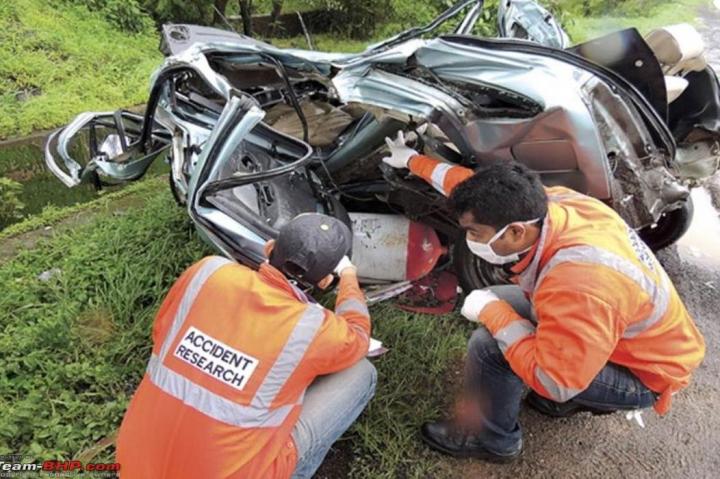News
Effect of speed in a car crash: Relation between speed & injury
I shudder to think of people casually saying that they drive over 120 km/h on highways.
BHPian electric_eel recently shared this with other enthusiasts.
People often underestimate how bad speed is when it comes to injury. Here is a quick "conversion" of speed to the equivalent height from which you need to jump to get the same effect (or maybe defect is the right word here).
If one is thrown out of a car (because of lack of belting up or worse sticking out of the sunroof) at a speed v then the kinetic energy is 1/2 m v^2. This is equivalent to jumping out from a building of height h = 1/2 m v^2 / mg. = 1/2 (v^2) g. For ease of calculation, we can take g = 10 m/s^2 then we get for v = 10 m/s = (36 Km /h) the height is 5 m (almost a 2-storey building 1 storey approx 3 m ). But what is worse is if one doubles the speed = 20 m/s (72 Km /h) it is equal to 20 * 20 /20 = 20 m which is approximately 6 floors (3 floors = 10 m).
i.e. at a nominal highway speed of about 70 km/h a crash is equivalent to jumping out of a 6-storey building. I shudder to think of people casually saying that they drive at 120+ (a relative's biggest gripe with cruise control was that it does not allow one to go above 120).
Here's what GTO had to say about the matter:
Thanks for sharing! Perhaps, the best illustration of that is in this video.
Here's what BHPian AutoNoob had to say about the matter:
Adding a real crash test video: 40mph (64 kmph) vs. 56mph (90 kmph) for reference.
Here's what BHPian NomadSK had to say about the matter:
Mathematically, your point is correct with respect to non-living things and with regard to energy dissipation. However, you have totally missed an important aspect, the capabilities of the human body to react to various Gs. In this case, you are comparing forward G to downward G (or zero G here).
A human body is well capable of handling/absorbing forward Gs as compared to the downward G or heck the most dangerous is the negative G. As you may expect, our body's physiology will both be affected by and respond to this variability in the G forces. So basically, the comparison you have made is similar to comparing "apples and oranges".
That's why a head-on collision is much safer than T-boning at the same speed or falling off a bridge.
Here's what BHPian chaitanyakrish had to say about the matter:
The BBC made a documentary that's highly recommended for anyone curious about how safety systems are added to cars. You can watch it here.
Ralph Nader deserves recognition for his work in challenging General Motors and pushing for the first US automobile safety law in 1966. His book titled "Unsafe at Any Speed" is widely known.
Check out BHPian comments for more insights and information.






.jpg)











